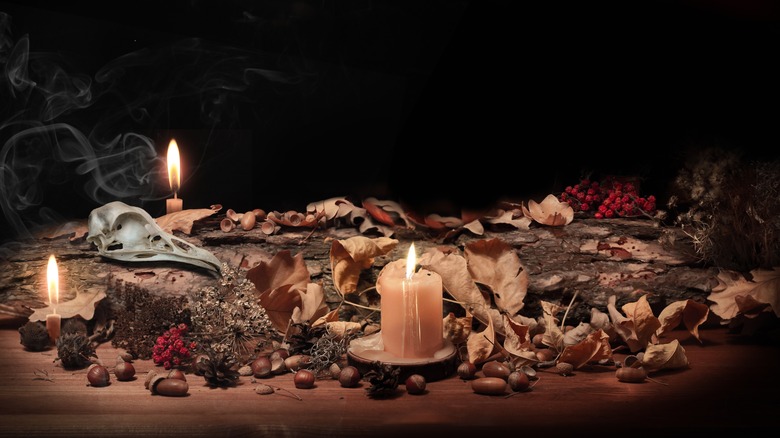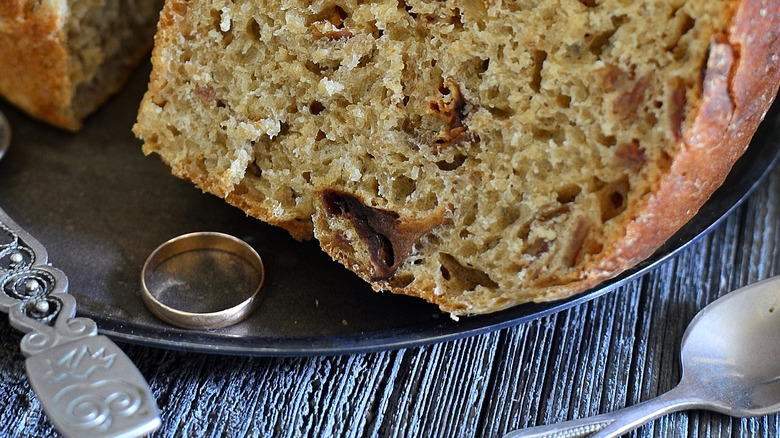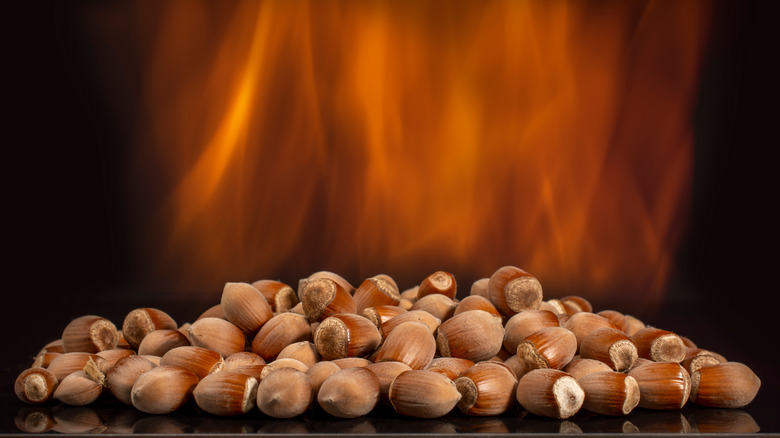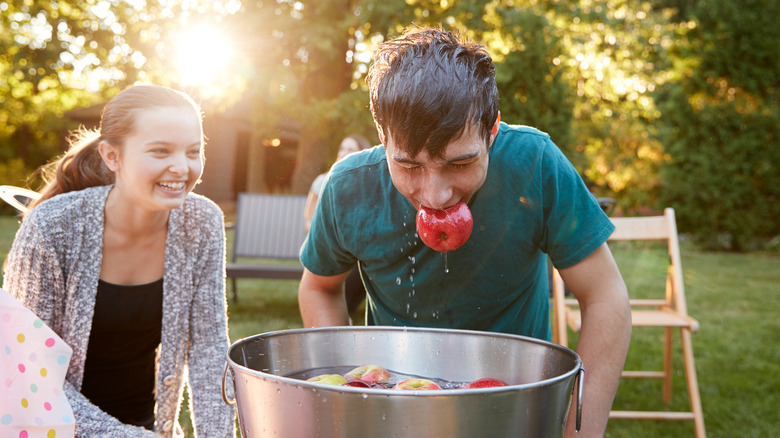The Halloween Food Traditions That Supposedly Predict Your Future
October 31 wasn't always the day of ghouls, ghosts, and goblins. In fact, according to Insider, so-called "traditions," such as dressing up and trick-or-treating, emerged in the United States in the 20th century and did not spread to the rest of the world until the 1990s. However, the holiday we now call Halloween isn't entirely new, as the day traces its roots to an ancient Irish festival called Samhain. While it had little in common with Halloween customs of costumes and candy, Samhain had great significance in old Celtic culture.
According to History, the festival of Samhain, which lasted from October 31 through November 1, celebrated the autumn harvest and welcomed the final stage of the year, in which the days would grow steadily shorter. At this special time, it was believed that the barrier between Earth and the spirit realm would break down, allowing forces from the other side to leak into the mortal world. The pagan Celts celebrated Samhain with feasts, bonfires, and military honors, but there was also a lighthearted and youthful side to the festivities. Per Food Timeline, many traditional celebrations involved a good deal of fortune-telling, particularly regarding matters of young love.
Ireland's Samhain foods predict future marriages
It might sound strange to those of us who think of Halloween as a day of death, but on October 31, the Celts had marriage on their minds. According to Food Timeline, numerous Samhain traditions involve predicting future marriages. These usually entail hiding a wedding ring in a communal item of food, and it is said that whoever gets it in their serving will be the next to get married (much like the tossing of a bouquet at a wedding).
Rings were hidden in colcannon, a traditional mash of potatoes and cabbage, as well as in barmbrack, a type of sweet bread. In another love-centric colcannon custom, girls would place the first and last spoonfuls of their serving into a stocking and hang it above the door. It was believed that the first man to enter through the portal would be their future husband, and how could he possibly resist a girl with cabbage and mashed potatoes in her socks?
Scotland and England focus on romantic forecasts
In some parts of Scotland and Northern England, October 31 is known as Nut Crack Night, thanks to another game of romantic forecasting. According to Food Timeline, the custom entailed tossing a pair of nuts representing two lovers into a fire. If both nuts burned steadily in the flames, the relationship in question would be strong. However, if one nut popped, it symbolized an unfaithful partner. With its romantic overtones, Nut Crack Night worked its way into literature, earning mentions in the poetry of Robert Burns and John Gay (via Cook's Info).
In Northern England, they played the hidden ring game with an appealingly-named dish called Mash o' Nine Sorts. Per Foods of England, this meal is similar to mashed potatoes and colcannon but involves — you guessed it — nine ingredients, those being potato, carrot, turnip, parsnip, leek, peas, with salt, pepper, and butter. A final Scottish tradition noted by Food Timeline had young people don blindfolds and pick stalks of kale. Certain traits of the kale were believed to relate to one's future spouse, like whether they were tall or short, healthy or withered, and the amount of dirt stuck to the roots was said to symbolize the size of the dowry one could expect from a prospective marriage.
The U.S.A.'s old-fashioned version of catching the bouquet
For modern Americans, October 31 is far removed from its romantic past, but believe it or not, some of the autumnal traditions we still enjoy were also rooted in old fortune-telling games. A prime example is bobbing for apples. According to Food Timeline, Americans adopted the classic party game from an old English custom, and it was said that the first person who could cleanly pluck an apple from the water with their teeth would find love and be wed before the rest of the competition.
Other apple-centric games include snap-apple, in which an apple is hung by a string and party guests are challenged to take a bite out of it while their hands are tied behind their backs. Young romantics would drop apple peels on the floor, believing they would fall to form the shape of their future spouse's first initial. The great forecasting power associated with apples is likely rooted in ancient Roman times with the harvest goddess Pomona.



